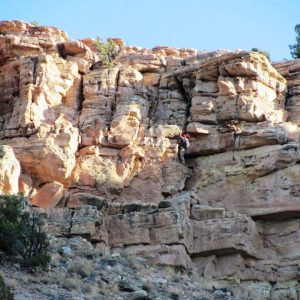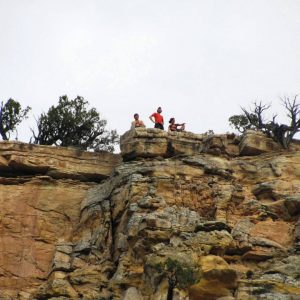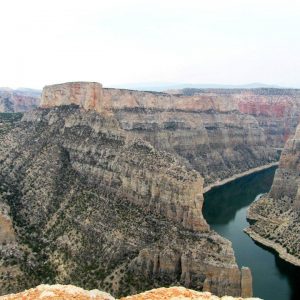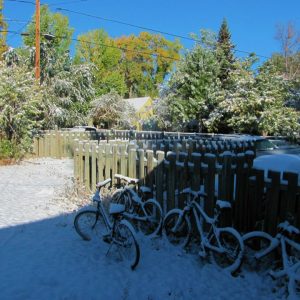As my internship concludes, I reflect not only on how much I have learned about the BLM and ecology, but also on how much I have learned about myself. I will admit that I went into this internship feeling a bit unprepared and doubting my ability to tackle every aspect of the job. I felt like a floundering fish in the midst of the newness; all the maps of where I would go and the scenes from the car windows all looked like a blur as they were thrown into my new daily routine. I remember gripping the GPS like it was the only light in the dark tunnel of the unknown. To me, the Piceance (Pee-ance) Basin, a word I dared not pronounce for the first week, appeared dry, hot, and monotonous.
It wasn’t until my third or fourth day that I got out into the field to discover that I would become one of the few to become familiar with the rare existence of the Piceance bladderpod and twinpod. I quickly embraced the role of a defender of these threatened plants and became impressed with the swift surfacing of my inner leader as I learned more and more about these plants. Right off the bat I was provided with opportunities to share my knowledge with others. With this, I had to quickly discover how I, the learner, could transition into the teacher. I had to step into the decision-making position and through this, I learned to better trust my instincts and weigh my options in a timely way. I learned that I could really rely on the foundation that I developed during my undergrad degree and that I didn’t need excessive experience to make grounded and wise decisions.

This is a site that was inspected for final reclamation. It failed for numerous reasons: a broken fence allowing for extreme grazing, and undesirable plants such as Russian thistle and Canada thistle.
My time with the plants suddenly transitioned when our field office was assigned with final reclamation inspections at well pad and pipeline sites. At first I felt as though I was given this task by default, but as I became more familiar with the inspections, I realized that I was just the right person for the job; I could even see myself continuing with reclamation in my future. Once again, when I was out in the field, I, the learner, became the teacher. I was provided with a brief overview of the inspection requirements and then sent out to lead the project. My field partner knew nothing of the inspections and I knew very little. My initial frustration ultimately dwindled into enjoyment, surprisingly. Being the leader in this role taught me everyone has some understanding to offer; my field assistant initially acted like she knew nothing at all on the task, I had to keep reminding her of what we were there to complete. I had to be persistent and creative with my questioning to keep my partner involved; eventually she dug deeper within her knowledge to offer great help. By the end of the season, we became a super-efficient team, where we each knew and completed our portions of the inspections.
I had many opportunities to see a wide variety of leadership strategies. I learned that what is most effective is for the leader to employ the skills of all team members. The worst thing I could do to myself would be to take on the entire job myself. I got to see others do this and completely stress themselves out while separating themselves from the team. I found it best to take the time to explain the entire task fully and then break up the work and delegate it to each member. While this can take longer at the beginning of a job, it makes the entire process more smooth and enjoyable. I found that the best way to tackle a daunting task is to break it up into smaller pieces done by individuals and can be done simultaneously with collaboration and corroboration at the end.
Mainly, I am walking away from my internship with a greater confidence in my leadership skills. Over this summer I have stepped into a side of myself that had been unexplored in its entirety. While I am aware that more experience will enhance and further explore this piece of myself, my CLM internship provided me with solid skills from which to draw upon. I now believe that I can accomplish what comes my way, no matter how unfamiliar.



















